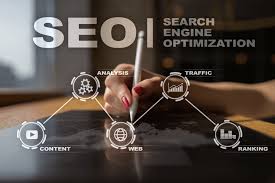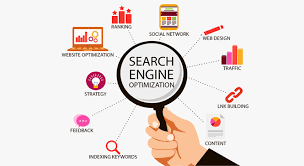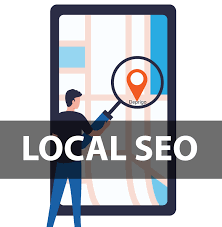The Power of SEM: Search Engine Marketing
Search Engine Marketing (SEM) is a powerful digital marketing strategy that aims to increase a website’s visibility in search engine results pages through paid advertising. It encompasses a range of activities such as pay-per-click (PPC) advertising, search engine optimisation (SEO), and other techniques to drive targeted traffic to a website.
Key Components of SEM:
Pay-Per-Click (PPC) Advertising: PPC advertising allows businesses to bid on keywords relevant to their target audience. Ads are displayed at the top of search engine results pages, and advertisers pay a fee each time their ad is clicked. This model ensures that businesses only pay when users engage with their ads.
Search Engine Optimisation (SEO): While SEO focuses on improving organic search rankings, it is also an integral part of SEM. By optimising website content, meta tags, and other factors, businesses can enhance their visibility in both paid and organic search results.
The Benefits of SEM:
Increased Visibility: SEM allows businesses to appear prominently in search results, increasing brand visibility and attracting potential customers actively searching for products or services.
Targeted Advertising: With SEM, businesses can target specific demographics, locations, and interests, ensuring that ads reach the right audience at the right time.
Measurable Results: SEM provides detailed analytics and reporting tools that allow businesses to track the performance of their campaigns in real-time. This data enables continuous optimisation for better results.
Best Practices for Successful SEM Campaigns:
Keyword Research: Conduct thorough keyword research to identify relevant terms that your target audience is searching for. Use these keywords strategically in your ads and landing pages.
Compelling Ad Copy: Create engaging ad copy that entices users to click on your ads. Highlight unique selling points and include clear calls-to-action to drive conversions.
Landing Page Optimization: Ensure that your landing pages are user-friendly, relevant to the ad content, and designed to encourage conversions. A seamless user experience can significantly impact campaign success.
In Conclusion
In today’s competitive digital landscape, SEM plays a crucial role in helping businesses stand out online and reach their target audience effectively. By utilising the power of paid advertising alongside SEO best practices, businesses can drive quality traffic to their websites and achieve measurable results that contribute to overall success.
Top 5 Advantages of SEM: Boosting Brand Visibility and Targeted Reach
- Increased brand visibility in search engine results pages
- Targeted advertising to reach specific demographics and interests
- Measurable results with detailed analytics and reporting tools
- Cost-effective pay-per-click model where advertisers only pay for clicks
- Ability to adjust campaigns in real-time for optimal performance
7 Drawbacks of SEM: From High Costs to Limited Reach
- 1. Costly
- 2. Competition
- 3. Click Fraud
- 4. Ad Blindness
- 5. Instant Results Dependency
- 6. Ad Fatigue
- 7. Limited Reach
Increased brand visibility in search engine results pages
Search Engine Marketing (SEM) offers businesses a significant advantage by increasing brand visibility in search engine results pages. By utilising SEM strategies such as pay-per-click advertising and search engine optimisation, businesses can secure prominent positions in search results, ensuring that their brand is prominently displayed to users actively searching for related products or services. This heightened visibility not only boosts brand awareness but also enhances credibility and trust among potential customers, ultimately driving valuable traffic to the website and increasing the likelihood of conversions.
Targeted advertising to reach specific demographics and interests
Search Engine Marketing (SEM) offers the significant advantage of targeted advertising, allowing businesses to tailor their marketing efforts to reach specific demographics and interests. By leveraging SEM strategies such as pay-per-click (PPC) advertising, businesses can precisely target their desired audience based on factors like location, age, interests, and online behaviour. This targeted approach not only increases the relevance of ads to potential customers but also enhances the overall effectiveness of marketing campaigns by reaching those most likely to engage with the content.
Measurable results with detailed analytics and reporting tools
One significant advantage of Search Engine Marketing (SEM) is its ability to deliver measurable results through detailed analytics and reporting tools. By leveraging these tools, businesses can gain valuable insights into the performance of their SEM campaigns in real-time. This data allows for a comprehensive analysis of key metrics such as click-through rates, conversion rates, and return on investment, enabling businesses to make informed decisions and optimise their strategies for maximum effectiveness. The transparency provided by detailed analytics empowers businesses to track progress, identify areas for improvement, and ultimately achieve greater success in their digital marketing efforts.
Cost-effective pay-per-click model where advertisers only pay for clicks
One significant advantage of Search Engine Marketing (SEM) is its cost-effective pay-per-click model, where advertisers only pay for clicks on their ads. This approach ensures that businesses are charged solely when users engage with their advertisements, making it a highly efficient and budget-friendly advertising method. By paying for actual clicks rather than just ad impressions, advertisers can maximise their marketing budget and achieve a higher return on investment, reaching a more engaged audience while controlling costs effectively.
Ability to adjust campaigns in real-time for optimal performance
One of the key advantages of Search Engine Marketing (SEM) is the ability to adjust campaigns in real-time for optimal performance. This flexibility allows businesses to monitor and analyse campaign data as it unfolds, enabling them to make immediate adjustments to keywords, ad copy, targeting parameters, and budgets. By leveraging real-time insights, businesses can fine-tune their SEM strategies on the fly, ensuring that resources are allocated efficiently and campaigns are continuously optimised for maximum impact and results.
1. Costly
SEM, while effective, comes with its drawbacks. One significant con of Search Engine Marketing is its costliness. Particularly when targeting competitive keywords, businesses may find themselves facing high advertising costs that can quickly escalate. This financial burden can be a barrier for smaller businesses or those with limited marketing budgets, making it challenging to sustain long-term SEM campaigns without incurring substantial expenses. Careful budgeting and strategic keyword selection are essential to mitigate the cost factor associated with SEM and ensure a positive return on investment.
2. Competition
Competition poses a significant challenge in Search Engine Marketing (SEM) as numerous businesses compete for the coveted top ad spots. The fierce competition in SEM means that businesses need to constantly refine their strategies, bid competitively on keywords, and stay ahead of industry trends to maintain visibility and attract potential customers. Standing out amidst the crowded digital landscape requires a deep understanding of target audiences, creative ad campaigns, and strategic budget allocation to effectively navigate the competitive nature of SEM.
3. Click Fraud
In the realm of Search Engine Marketing (SEM), one significant drawback is the prevalence of click fraud. This unethical practice involves competitors or automated bots clicking on ads with the sole intent of depleting advertising budgets, rather than showing genuine interest in the products or services being promoted. Click fraud not only wastes resources but also distorts campaign performance metrics, making it challenging for businesses to accurately assess the effectiveness of their SEM efforts and allocate budgets efficiently. Vigilance and proactive measures are essential to mitigate the impact of click fraud and maintain the integrity of SEM campaigns.
4. Ad Blindness
One significant drawback of Search Engine Marketing (SEM) is the phenomenon of ad blindness. As users are exposed to an increasing number of paid search results, they may develop a tendency to overlook or ignore these advertisements altogether. This poses a challenge for SEM campaigns as the effectiveness of reaching and engaging with the target audience diminishes when users become desensitised to paid ads. Ad blindness underscores the importance of crafting compelling and relevant ad content that resonates with users to combat this issue and maximise the impact of SEM efforts.
5. Instant Results Dependency
SEM offers quick results, but one significant drawback is the risk of instant results dependency. While SEM can deliver immediate visibility and traffic to a website through paid advertising, businesses may fall into the trap of prioritising short-term gains over sustainable, long-term strategies. This dependency on instant gratification can lead to overlooking the importance of organic growth and building a strong online presence through methods like search engine optimisation (SEO). By focusing solely on quick wins from SEM, businesses may miss out on the opportunity to establish a solid foundation for continuous success in the digital landscape.
6. Ad Fatigue
Ad fatigue is a notable downside of Search Engine Marketing (SEM) where running the same ads repeatedly can cause users to become disinterested and overlook the content. This phenomenon can lead to a decline in user engagement over time as the audience becomes accustomed to the ad and may start ignoring it altogether. To combat ad fatigue, businesses engaging in SEM need to continuously refresh their ad creatives, messaging, and targeting strategies to maintain audience interest and maximise campaign effectiveness.
7. Limited Reach
One significant drawback of Search Engine Marketing (SEM) is its limited reach. SEM primarily targets users actively searching for specific keywords, which can result in missing out on broader audiences who may not be utilising search engines for their information or product discovery. This narrow focus on search engine users may restrict the potential reach of marketing campaigns, especially when compared to other digital marketing strategies that can engage with a wider range of audiences across various online platforms.




